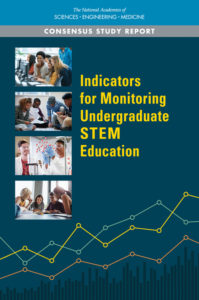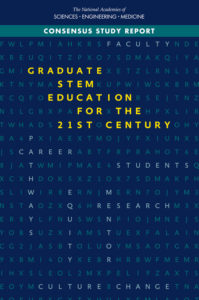Peter Lobner
Sputnik 1 was launched on 4 October 1957 by the Soviet Union and became the first man-made object to be placed into Earth orbit. See my 4 October 2017 post discussing the 60th anniversary of this event.
The launch of Sputnik 1, and the subsequent launches of Sputnik 2 on 4 October 1957 and Sputnik 3 on 15 May 1958, prompted calls for more technical education in the U.S. One reaction was the National Defense Education Act (NDEA) passed by Congress and signed by President Dwight Eisenhower on 2 September 1958. A primary goal of NDEA was to help align the nation’s educational systems to better meet the nation’s security needs, particularly in the areas of science, engineering and mathematics, where the U.S. was being challenged by the Soviet Union.
You can read more on the NDEA here:
https://www.britannica.com/topic/National-Defense-Education-Act
It’s ironic that today, more than 60 years after Sputnik 1 was launched, our nation’s educational system is still trying to figure out how to deliver science, technology, engineering and mathematics education, now under the popular banner “STEM” (or “STEAM”, so the Arts don’t feel left out).
As I discussed in my 13 December 2016 post, “The PISA 2015 Report Provides an Insightful International Comparison of U.S. High School Student Performance,”the U.S. was ranked 40thin math, 25thin science, and 24thin reading among 73 international educational systems. PISA 2015 provided strong evidence that students in many other nations are better prepared in science and math than their peers in the U.S. You can read that post here:
The National Academies Press (NAP) recently (2018) published two reports of consensus studies concerning the delivery of STEM education and a framework for assessing the status and quality of that education. The first is entitled, “Indicators for Monitoring Undergraduate STEM Education.”
 Source: NAP
Source: NAP
NAP describes this report as follows:
“Science, technology, engineering and mathematics (STEM) professionals generate a stream of scientific discoveries and technological innovations that fuel job creation and national economic growth. Ensuring a robust supply of these professionals is critical for sustaining growth and creating jobs growth at a time of intense global competition. Undergraduate STEM education prepares the STEM professionals of today and those of tomorrow, while also helping all students develop knowledge and skills they can draw on in a variety of occupations and as individual citizens. However, many capable students intending to major in STEM later switch to another field or drop out of higher education altogether, partly because of documented weaknesses in STEM teaching, learning and student supports. Improving undergraduate STEM education to address these weaknesses is a national imperative.
Many initiatives are now underway to improve the quality of undergraduate STEM teaching and learning. Some focus on the national level, others involve multi-institution collaborations, and others take place on individual campuses. At present, however, policymakers and the public do not know whether these various initiatives are accomplishing their goals and leading to nationwide improvement in undergraduate STEM education.
Indicators for Monitoring Undergraduate STEM Education outlines a framework and a set of indicators that document the status and quality of undergraduate STEM education at the national level over multiple years. It also indicates areas where additional research is needed in order to develop appropriate measures. This publication will be valuable to government agencies that make investments in higher education, institutions of higher education, private funders of higher education programs, and industry stakeholders. It will also be of interest to researchers who study higher education.”
You can download this report here:
https://www.nap.edu/catalog/24943/indicators-for-monitoring-undergraduate-stem-education
The second report is entitled, “Graduate STEM Education for the 21stCentury.”
 Source: NAP
Source: NAP
NAP describes this report as follows:
“The U.S. system of graduate education in science, technology, engineering, and mathematics (STEM) has served the nation and its science and engineering enterprise extremely well. Over the course of their education, graduate students become involved in advancing the frontiers of discovery, as well as in making significant contributions to the growth of the U.S. economy, its national security, and the health and well being of its people. However, continuous, dramatic innovations in research methods and technologies, changes in the nature and availability of work, shifts in demographics, and expansions in the scope of occupations needing STEM expertise raise questions about how well the current STEM graduate education system is meeting the full array of 21st century needs. Indeed, recent surveys of employers and graduates and studies of graduate education suggest that many graduate programs do not adequately prepare students to translate their knowledge into impact in multiple careers.
Graduate STEM Education for the 21st Century examines the current state of U.S. graduate STEM education. This report explores how the system might best respond to ongoing developments in the conduct of research on evidence-based teaching practices and in the needs and interests of its students and the broader society it seeks to serve. This will be an essential resource for the primary stakeholders in the U.S. STEM enterprise, including federal and state policymakers, public and private funders, institutions of higher education, their administrators and faculty, leaders in business and industry, and the students the system is intended to educate.”
You can download this report here:
https://www.nap.edu/catalog/25038/graduate-stem-education-for-the-21st-century
Hopefully, today’s investments in STEM education will yield tangible results that will help strengthen the position of the U.S. among the very broad field of international competitors vying for a piece of, or dominance in, various segments of the modern technology market.